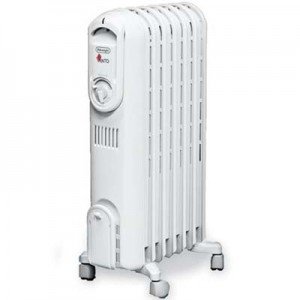Small space heaters are typically used when the main heating system is inadequate or when central heating is too costly to install or operate. In some cases, small space heaters can be less expensive to use if you only want to heat one room or supplement inadequate heating in one room. They can also boost the temperature of rooms used by individuals who are sensitive to cold, especially elderly persons, without overheating your entire home.
Space heater capacities generally range between 10,000 Btu and 40,000 Btu per hour, and commonly run on electricity, propane, natural gas, and kerosene (see wood and pellet heatingfor information on wood and pellet stoves).
Although most space heaters work by convection (the circulation of air in a room), some rely on radiant heating. Radiant heaters emit infrared radiation that directly heats objects and people within their line of sight, and are a more efficient choice when you will be in a room for only a few hours and can stay within the line of sight of the heater. They can also be more efficient when you will be using a room for a short period because they save energy by directly heating the occupant of the room and the occupant’s immediate surroundings rather than the whole room.
Safety is a top consideration when using space heaters. The U.S. Consumer Product Safety Commission estimates that more than 25,000 residential fires every year are associated with the use of space heaters, resulting in more than 300 deaths. In addition, an estimated 6,000 people receive hospital emergency room care for burn injuries associated with contacting the hot surfaces of room heaters, mostly in non-fire situations.
When buying and installing a small space heater, follow these guidelines:
- Only purchase newer model heaters that have all of the current safety features. Make sure the heater carries the Underwriter’s Laboratory (UL) label.
- Choose a thermostatically controlled heater, because they avoid the energy waste of overheating a room.
- Select a heater of the proper size for the room you wish to heat. Do not purchase oversized heaters. Most heaters come with a general sizing table.
- Locate the heater on a level surface away from foot traffic. Be especially careful to keep children and pets away from the heater.
VENTED AND UNVENTED COMBUSTION SPACE HEATERS
Space heaters are classified as vented and unvented or “vent-free.” Unvented combustion units are not recommended for use inside your home, because they introduce unwanted combustion products into the living space—including nitrogen oxides, carbon monoxide, and water vapor—and deplete air in the space. Most states have banned unvented kerosene heaters for use in the home and at least five have banned the use of unvented natural gas heaters.
Vented units are designed to be permanently located next to an outside wall, so that the flue gas vent can be installed through a ceiling or directly through the wall to the outside. Look for sealed combustion or “100% outdoor air” units, which have a duct to bring outside into the combustion chamber. Sealed combustion heaters are much safer to operate than other types of space heaters, and operate more efficiently because they do not draw in the heated air from the room and exhaust it to the outdoors. They are also less likely to backdraft and adversely affect indoor air quality.
Less expensive (and less efficient) units use the room air for combustion. They do not have a sealed glass front to keep room air away from the fire and should not be confused with a sealed combustion heater.
In addition to the manufacturer’s installation and operating instructions, you should follow these general safety guidelines for operating any combustion space heater:
- For liquid-fueled heaters, use only the approved fuel. Never use gasoline! Follow the manufacturer’s fueling instructions. Never fill a heater that is still hot. Do not overfill the heater — you must allow for the expansion of the liquid. Only use approved containers clearly marked for that particular fuel, and store them outdoors.
- Have vented space heaters professionally inspected every year. If the heater is not vented properly, not vented at all, or if the vent is blocked, separated, rusted, or corroded, dangerous levels of carbon monoxide (CO) can enter the home causing sickness and death. CO also can be produced if the heater is not properly set up and adjusted for the type of gas used and the altitude at which it is installed.
ELECTRIC SPACE HEATERS
Electric space heaters are generally more expensive to operate than combustion space heaters, but they are the only unvented space heaters that are safe to operate inside your home. Although electric space heaters avoid indoor air quality concerns, they still pose burn and fire hazards and should be used with caution.
For convection (non-radiant) space heaters, the best types incorporate a heat transfer liquid, such as oil, that is heated by the electric element. The heat transfer fluid provides some heat storage, allowing the heater to cycle less and to provide a more constant heat source.
When buying and installing an electric space heater, you should follow these general safety guidelines:
- Electric heaters should be plugged directly into the wall outlet. If an extension cord is necessary, use the shortest possible heavy-duty cord of 14-gauge wire or larger. Always check and follow any manufacturer’s instructions pertaining to the use of extension cords.
- Buy a unit with a tip-over safety switch, which automatically shuts off the heater if the unit is tipped over.
Courtesy of: http://energy.gov/energysaver/articles/portable-heaters
of: http://energy.gov/energysaver/articles/portable-heaters